It is not always easy to keep your lawn looking thick and green. Even the most well-tended lawns can fall victim to various challenges, leaving you wondering if there’s any hope for revival once grass starts to die and turn brown. Thankfully, the Tuxedo team is here to tell you that there is hope with this guide to reviving dead grass!
Whether you’re dealing with a few small patches or an entire lawn on the brink of despair, we’ll guide you through the essential steps and expert tips to breathe life back into your lawn. So, grab your gardening gloves, and let’s embark on a journey to revive your dead grass and transform your lawn back into the lush oasis it once was!
Dead Grass vs. Brown Grass
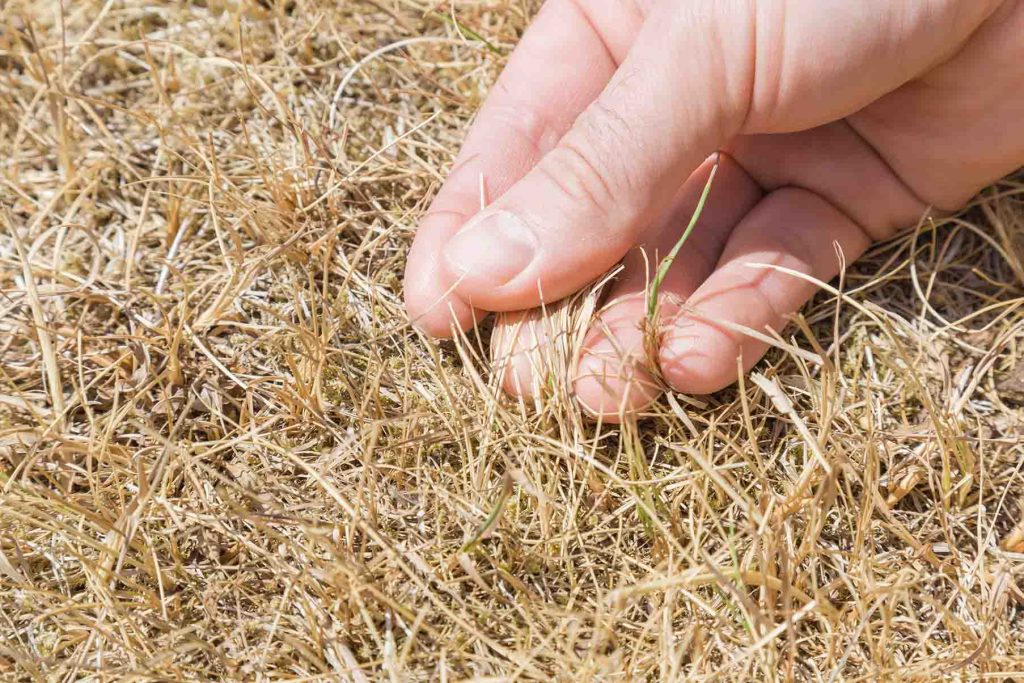
It’s important to understand that not all brown grass is dead grass. Brown grass is often a sign of stress or dormancy rather than a complete loss of life. When grass faces adverse and harmful conditions, it can enter a survival mode where it conserves energy by turning brown and temporarily halting growth. This is a natural response to protect itself from further harm. The roots of brown grass are typically still alive and can bounce back when conditions become more favorable, making it a reversible state. Proper care, like adequate watering and fertilization, can revive brown grass, helping it return to its lush green state once the stressors are mitigated.
In contrast, dead grass has undergone irreversible damage, often losing both color and structural integrity, necessitating more extensive efforts to restore a healthy lawn. A good way to tell the difference is to gently pull up on the blades of grass in question. Brown grass with active roots will still give resistance, whereas dead grass and roots will pull right up and out of your lawn. The same factors that cause grass to turn brown can eventually kill your grass if corrective measures are not taken. Below are some of the most common causes of brown and/or dead grass:
- Drought or inadequate watering
- High temperatures and heat stress
- Soil compaction and poor aeration
- Nutrient deficiencies or imbalances
- Overuse of herbicides or pesticides
- Fungal or bacterial diseases
- Pest and grub infestations
- Improper mowing practices
- Traffic and heavy use
- Winter dormancy (cool-season grasses)
Reviving Dead Lawns
When you start to notice more dead grass in your lawn than thriving green grass blades, you must take action immediately! Lawns that are still about 50% healthy often have enough resources and reserves in the remaining roots and healthy leaf blades to bounce back. With proper care, you can help your lawn spur new growth in place of the old, dead grass. Taking the following steps will provide your lawn the best possible chance for recovery!
Rake Thatch & Dead Grass
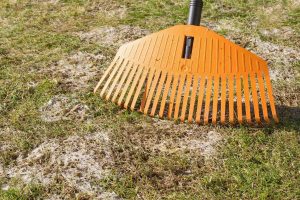
Raking thatch and dead grass before embarking on the journey of reviving a lawn is a fundamental step that should not be underestimated. Thatch, which consists of dead grass, roots, and organic debris, can form a dense layer on the soil’s surface over time. This layer inhibits water, nutrients, and air from reaching the roots of your grass, stifling its growth and health. By diligently raking and removing thatch and dead grass, you create a clean canvas for your lawn’s revival efforts.
This process allows essential elements to penetrate the soil more effectively and helps prevent future thatch buildup, promoting the development of a strong, resilient lawn. In essence, raking serves as the foundation for a successful lawn revival, setting the stage for new growth and a thriving outdoor space.
Test & Amend Soil
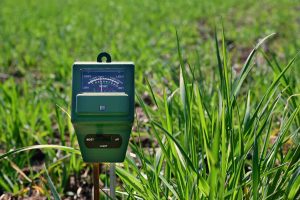
Testing and amending soil pH is a crucial preparatory step when reviving dead grass in your lawn. Soil pH directly impacts nutrient availability to your grass, and an imbalance can hinder its growth and vitality. By conducting a soil test, you gain valuable insights into your soil’s pH level and nutrient content. Depending on the results, you can then adjust the pH using amendments like lime or sulfur, ensuring it falls within the optimal range for your chosen grass type.
Aerate & Overseed

Aeration and overseeding are invaluable techniques when it comes to breathing life back into a dead or struggling lawn. Aeration, which involves perforating the soil with small holes, serves several critical functions. It alleviates soil compaction, a common issue that restricts root development and hinders water and nutrient absorption. By improving the soil’s structure and allowing for better air circulation, aeration creates a more hospitable environment for grass roots to flourish. Aeration also helps break down thatch, enabling it to decompose naturally and reducing the risk of it suffocating your lawn.
Overseeding complements aeration by introducing fresh grass seed to the lawn. This not only fills in bare patches but also introduces new grass varieties or cultivars that may be better suited to your specific soil and climate conditions. Over time, this diversity enhances the lawn’s resilience to environmental stresses, pests, and diseases. It also promotes a thicker, lusher lawn that can better compete with weeds, further improving its overall health and appearance.
Water Deeply & Infrequently
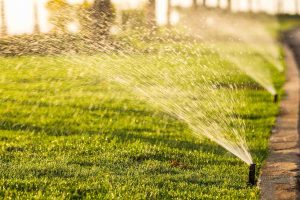
Deep, infrequent watering is a vital practice when reviving dead grass because it encourages robust root development and overall lawn health. Shallow, frequent watering promotes shallow root growth, making the grass more susceptible to stress and drought. In contrast, deep watering encourages the roots to reach deeper into the soil in search of moisture and nutrients, making them more resilient and better equipped to withstand dry periods. By adhering to a schedule of deep, infrequent watering, you ensure that your grass receives the hydration it needs to recover while fostering a stronger and more resilient lawn that can thrive even in challenging conditions.
Fertilize & Control Weeds
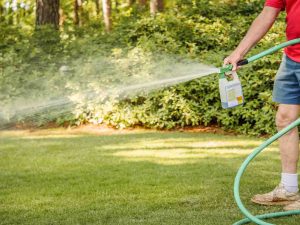
Fertilization and weed control are inseparable partners in the process of reviving a dead lawn. Fertilization provides the essential nutrients that dead or struggling grass needs to recover and thrive. It acts as a catalyst for growth, strengthening the grass and promoting its ability to bounce back. It’s important to note that you do not want to overstress young grass seedlings with excess nitrogen, so look for a starter-fertilizer when reviving grass. Results may take longer to see, but you will eventually have a much healthier and stronger lawn.
Weeds compete with grass for nutrients and water, which inhibits healthy growth. By incorporating weed control measures alongside fertilization, you create a favorable environment where your revitalized grass can flourish. This dual approach ensures that your lawn doesn’t just come back to life, but does so with strength and vigor. Pulling visible weeds and/or applying pre-emergent will help ensure that your newly emerging grass will have access to as many resources as possible.
Preventing Dead Grass This Winter!
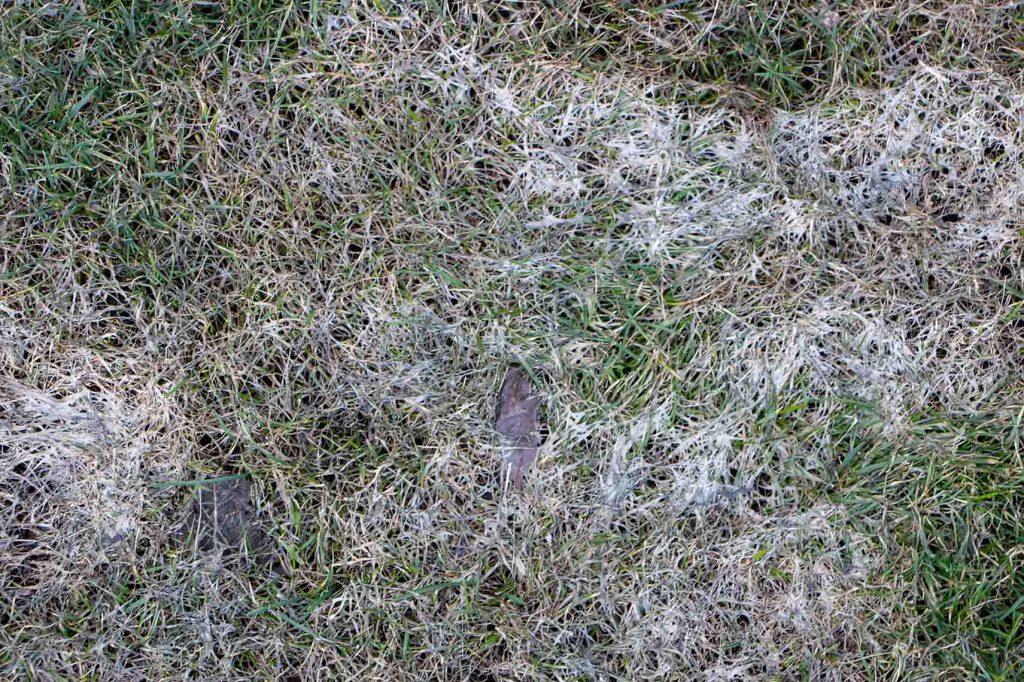
Here in northern Utah, winters can be very harsh on our lawns. Freezing temperatures and heavy snow are two of the leading causes of dead grass for cool-season lawns, so it is important to know how to keep your lawn healthy before and during the coldest parts of the year. We hope you will call us here at Tuxedo Yard Care to take care of all your fall and winter lawn care needs, and be sure to keep the following tips in mind to keep your lawn looking great when spring rolls around again:
- Rake leaves and debris as soon as they fall in autumn rather than removing them after winter. This will reduce damage to your turf and prevent lawn disease in spring.
- Mowing your lawn slightly shorter than normal just before the first snowfall can help reduce the possibility of snow mold.
- Test your soil in fall to see if its pH levels are healthy. If needed, applying lime will slowly balance acidity levels during winter.
- Apply fungicides before the ground freezes to prevent snow mold. Active snow mold will not respond to most fungicide treatments.
- Shovel Carefully. Do not pile snow up on your lawn when shoveling paved areas. Instead, disperse it evenly, or find a secluded corner of your yard where compaction isn’t an issue.



